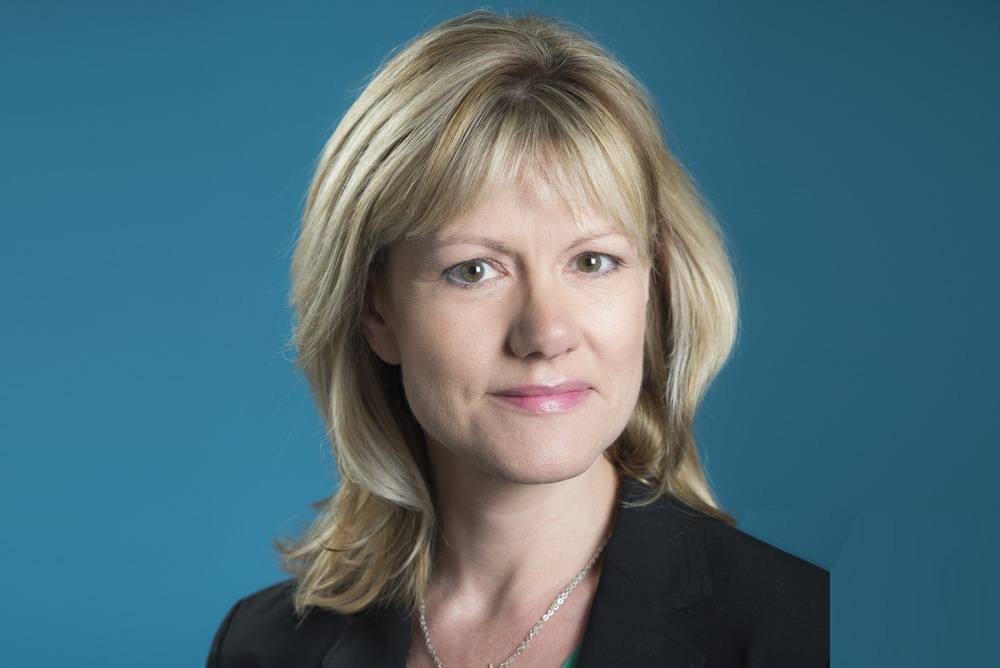In her 20 years as a researcher at RAND Corporation, the last 10 of which she has focused on afterschool, Jennifer McCombs enjoys almost every part of the research process from idea formation to instrument development to data collection and data analysis. Her favorite part, she said, is going out into the field, attending classrooms and observing kids.
But she doesn’t enjoy it all. The writing part is her least-liked.
 “Some people love the writing,” McCombs said. “It’s a very important part, but it’s not my favorite.”
“Some people love the writing,” McCombs said. “It’s a very important part, but it’s not my favorite.”
Even so, she has authored or co-authored dozens of research papers, reports and commentary over the years. McCombs slogs through the writing process to share data and evidence that she says will help improve afterschool programs.
Her work is pushing afterschool programs from one-offs and intuition toward a data-driven, scalable and replicable model.
Youth Today caught up with McCombs to learn more about her work and how it has changed the afterschool landscape.
The conversation
Will you start us off with background on your role at the RAND Corporation?
Yes, I am a senior policy researcher and the director of the Behavioral and Policy Sciences Department at RAND, a nonprofit research organization that focuses on improving decision-making through research and analysis. I’ve worked at RAND for 20 years and my research agenda focuses very broadly on understanding the effectiveness of policies and programs that are intended to support and improve outcomes for disadvantaged youth. For the last decade, I have done a lot of work understanding out-of-school and summer programs.
What has been the most exciting research you’ve conducted as it relates to afterschool?
One of the biggest, most influential studies that I’ve conducted has been around voluntary summer learning programs. The study is called the National Summer Learning Project and it was funded by The Wallace Foundation. The NSLP was designed to understand how districts and community partners could run summer school programs for elementary students at scale (serving large numbers of students); whether there would be demand for the program; the effect of consecutive summers of programming on student outcomes; and the persistence of effects over time. We launched the randomized longitudinal study in 2011, and we’re currently finishing up the last of our reports out of the study right now. The NSLP provides the most comprehensive evidence about voluntary multi-subject academic summer learning programs.
What are the findings?
The programs were run by districts with community partners and were offered to large numbers of students. It turned out that demand for the program was strong and districts recruited far more students than could be served. After two summers of programming, high attenders — students who attended 20 sessions — outperformed the control group in both mathematics and language arts. We were able to not only understand the effectiveness of summer learning programs, but also provide some real guidance to the field about how to create effective, high quality, voluntary summer learning programs, and particularly those that are run by districts in coordination with community-based partners.
Why is this so influential?
Not only were we able to say that summer programs can be effective in improving outcomes for mathematics and English language arts for kids, particularly for kids who attended at high rates, and who attended for consecutive summers, but we could also say these are the specific things that districts should be implementing and thinking about when creating these programs to achieve these benefits for children and youth. We have a series of reports that speak to the outcomes, but we also have a guide specifically for practitioners. It provides operational guidance to school districts and community-based partners on how to implement them well.
Additionally, this study and the implementation guide have become even more relevant due to Covid as school districts across the nation are looking for different ways of addressing the lost learning opportunities that happened the past year and a half due to the pandemic.
Do you have a sense of how many districts are following your implementation guide?
No. Not at all. What I have seen, though, is a paradigm shift in how people think about summer school programs. When we started the study 10 years ago, the idea of a voluntary summer learning program operated by a school district that combined academic studies and camp-like activities — rock climbing, arts and crafts, swimming, drama, dance — was a novel approach. The only programs offered by school districts that were available back then were primarily mandatory academic programs that many viewed as almost punitive. Now, most of the district programs are voluntary and include learning and enrichment opportunities for children and youth and are viewed as positive programs that youth will want to engage in. And this has been a model that got picked up across the country this past summer, and I expect to see even more of it in the future.
How do these summer school programs address the equity issue?
These district-run programs are free for families and students. We know that summer is a time of opportunity and risk and that those opportunities and risks are not distributed equitably. Children who are experiencing poverty are far less likely to have access to structured programming. They’re at higher risk of having food insecurity during the summer than during the school year and they are far more likely to be falling behind their more affluent peers. Clearly, there is an equity issue in terms of how do we create the experiences and environments for children who are experiencing poverty, who are disproportionately Black and Hispanic, and level that playing field to be able to give them the quality of experiences that other kids might have. That is why summer programming is important, and why it is particularly important for that type of community. In terms of programming, we are thinking about developing culturally responsive programming and about breaking down any type of barriers to access that might exist in different communities and addressing those. A good resource is the “Every Hour Counts” guidebook.
What’s next on your research radar as it related to summer school programs?
We know a lot about how to put together strong programs for elementary school youth. But there is a lack of research at the middle and high school levels. I’m really interested in understanding more about what these types of programs would look like, and how to implement them in middle school and high school, which require different types of activities to make them particularly interesting and different types of collaborations with organizations.
For instance, can you put together a high school credit recovery program that’s linked with your youth employment program? What does that look like? And then what effect does that have on kids? Those types of questions are very exciting to me because the answer could lead to new types of innovations and provide data on how to promote and replicate new programming.
The details
Title: Director, Behavioral and Policy Sciences Department; senior policy researcher at RAND Corporation
Residence: Fairfax County, Virginia
In an alternative reality what research would be your focus if not youth development? Human implications of climate change, particularly around different strategies to handle upcoming mass migration of populations.
Hobbies: Yoga, reading and playing with her dogs.
Latest book: “The Handmaid’s Tale” by Margaret Atwood
Education: Doctorate in public policy from The George Washington University; bachelor’s in East Asian Studies from College of William and Mary






























